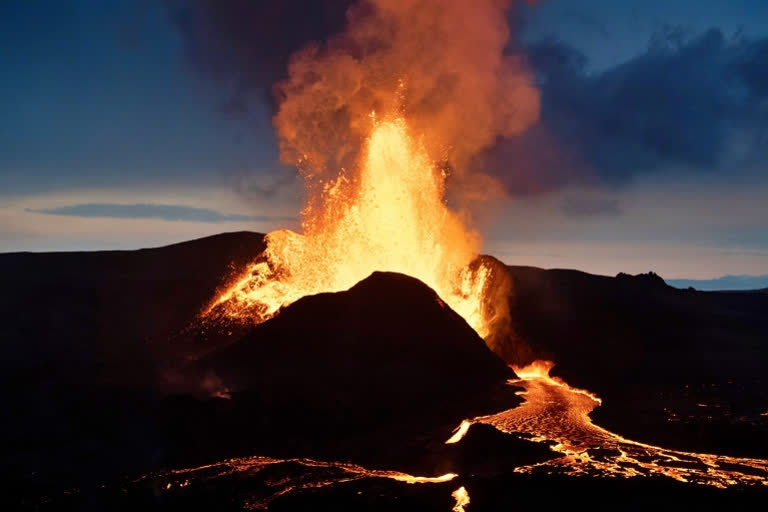Reykjavik (Iceland):A volcano erupted in Iceland near the capital Reykjavik on Wednesday, the Icelandic Meteorological Office (IMO) said as live images on local media showed lava spewing out of a fissure in the ground. The eruption was some 40 kilometres (25 miles) from Reykjavik, near the site of the Mount Fagradalsfjall volcano that erupted for six months in March-September 2021, mesmerising tourists and spectators who flocked to the scene.
This time, a line of glowing red lava could be seen gushing from the ground, spreading into a blanket of smouldering black rock as it cooled and as blue smoke rose up from the hilly landscape on the Reykjanes peninsula. "Eruption has started near Fagradalsfjall. Exact location has yet to be confirmed," the IMO, which monitors seismic activity, wrote on Twitter.
It estimated the size of the fissure at about 300 meters (yards). It later said the eruption started in the Meradalir valley, less than one kilometre from the scene of last year's eruption. Wednesday's eruption came after a period of intense seismic activity, with about 10,000 earthquakes detected since Saturday, including two with a magnitude of at least 5.0. While there was no ash plume, the IMO said it was "possible that pollution can be detected due to the gas release".
Also read:Spectacular volcano eruption draws visitors in Iceland
Gases from a volcanic eruption -- especially sulphur dioxide -- can be elevated in the immediate vicinity, and may pose a danger to health and even be fatal. Gas pollution can also be carried by the wind. "Risk to populated areas and critical infrastructure is considered very low and there have been no disruptions to flights", the Icelandic foreign ministry said on Twitter. More than an hour after the start of the eruption, a commercial passenger jet could be seen flying over the eruption site at low altitude heading for Reykjavik's main airport Keflavik.
Mount Fagradalsfjall belongs to the Krysuvik volcanic system on the Reykjanes peninsula in southwestern Iceland. Iceland has 32 volcanic systems currently considered active, the highest number in Europe. The country has had an eruption every five years on average. However, until last year's eruption at Mount Fagradalsfjall, the Reykjanes peninsula had not experienced an eruption since the 13th century, when a volcano erupted for 30 years from 1210 to 1240.
After last year's eruption, geophysicists had said it could signal the beginning of a new period of eruptions lasting centuries. Iceland, a vast island near the Arctic Circle, straddles the Mid-Atlantic Ridge, a crack on the ocean floor separating the Eurasian and North American tectonic plates. The shifting of these plates is in part responsible for Iceland's intense volcanic activity. (AFP)
